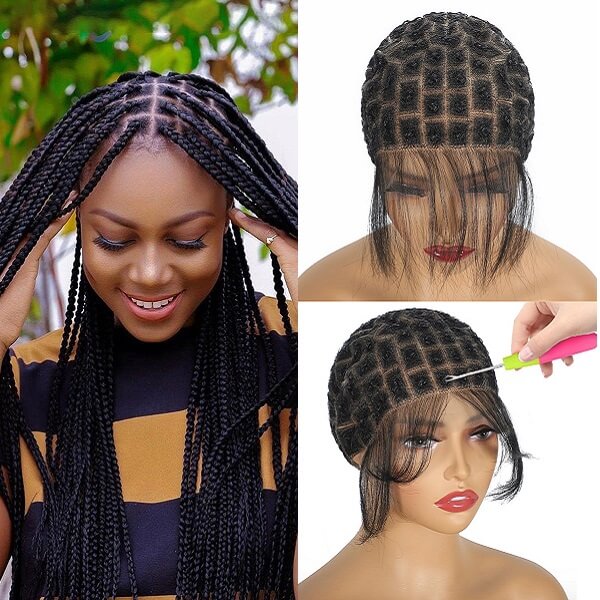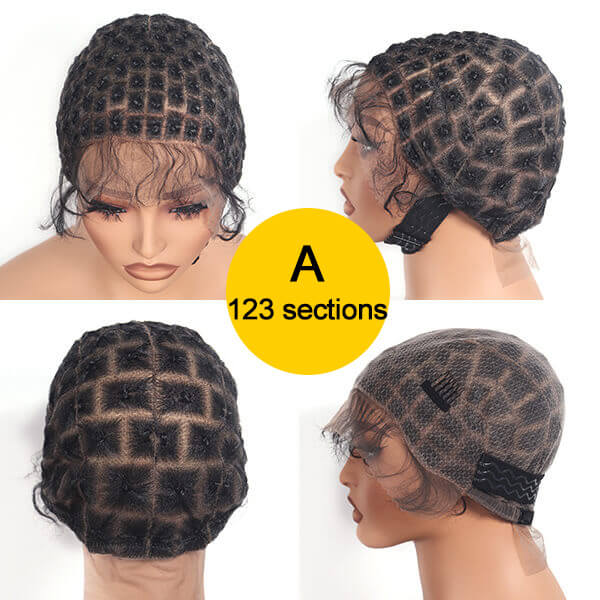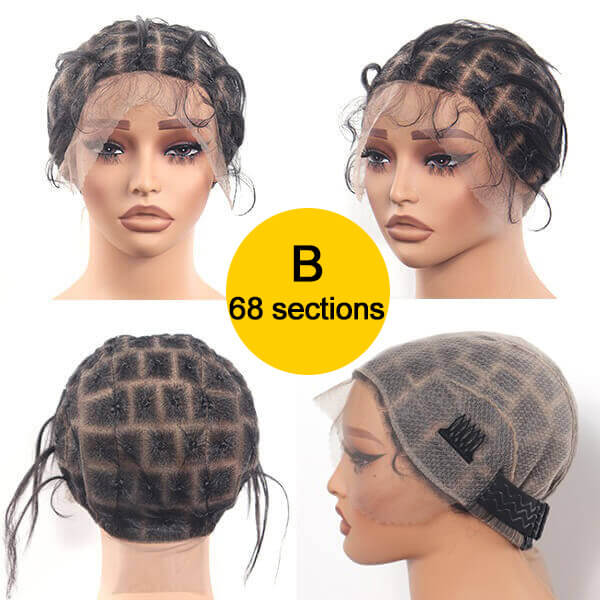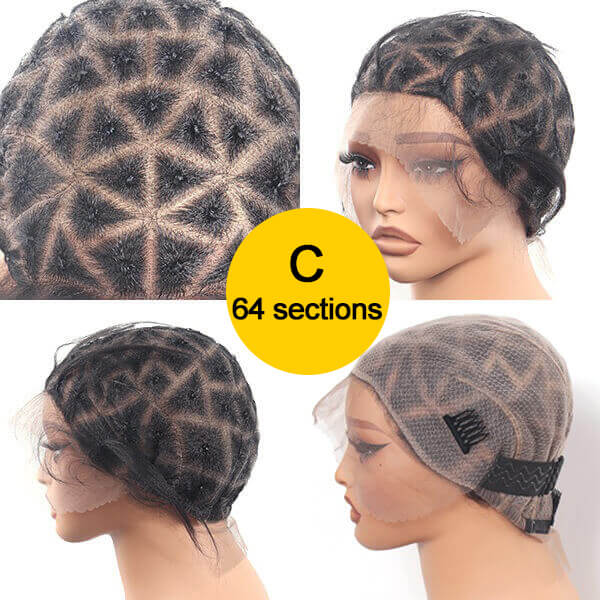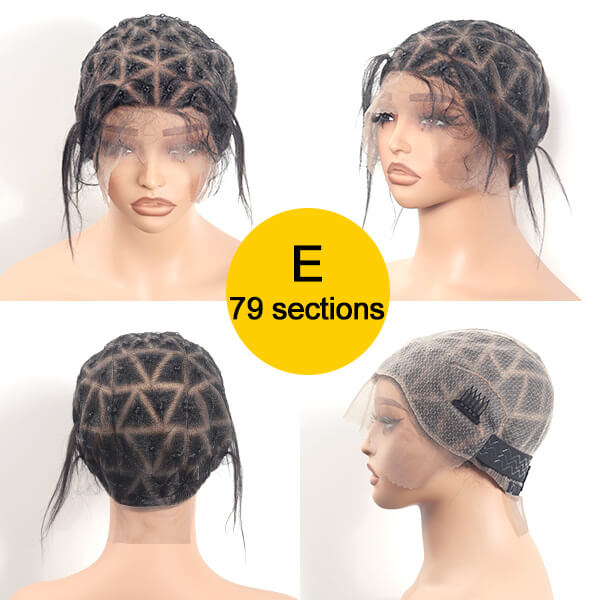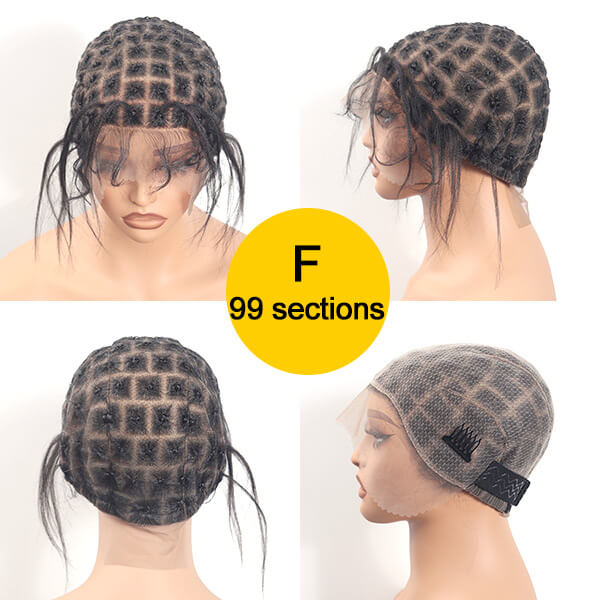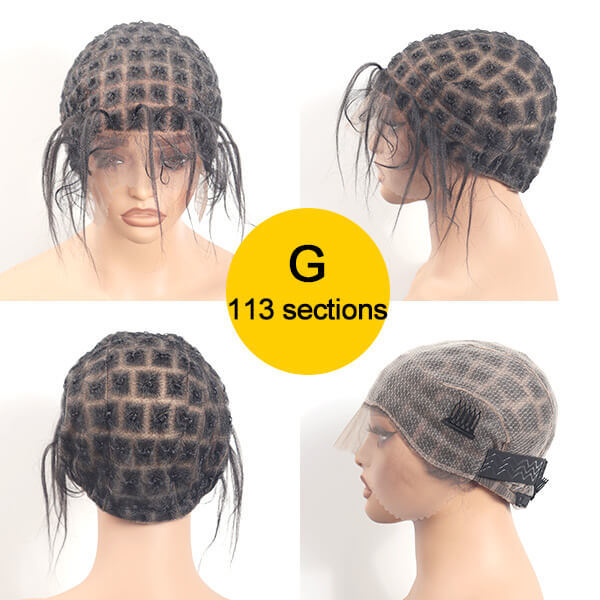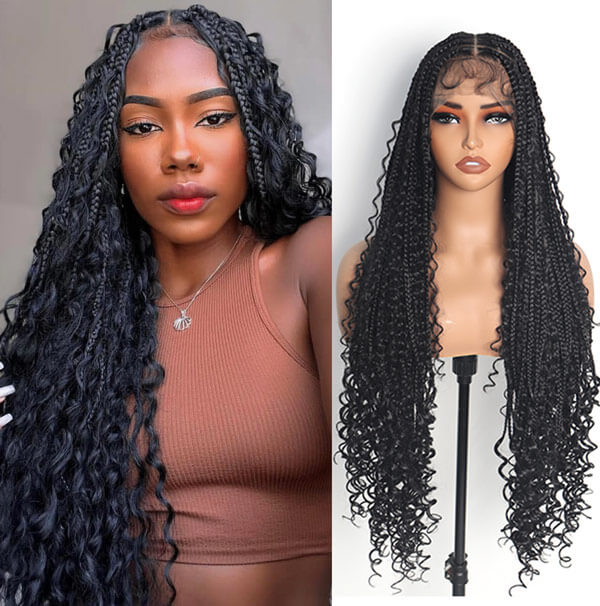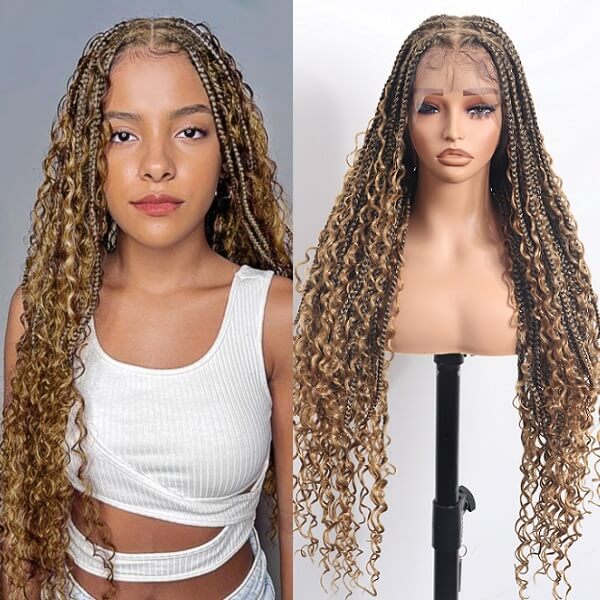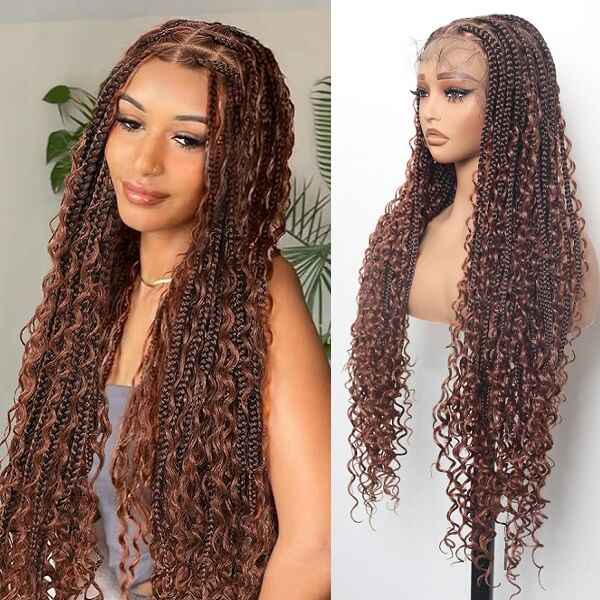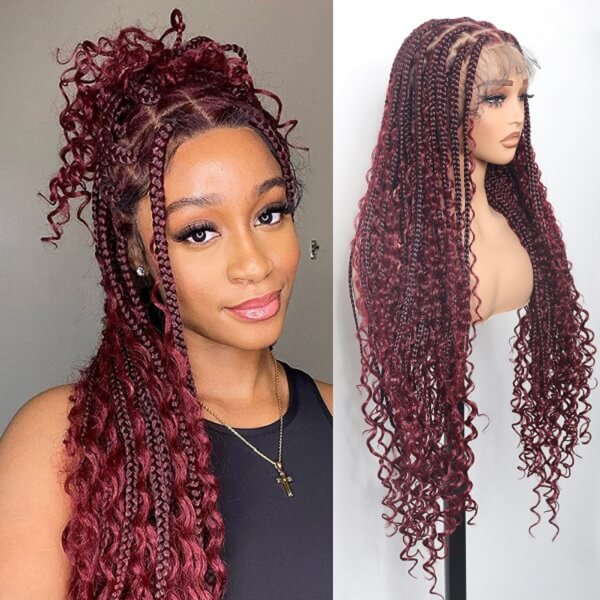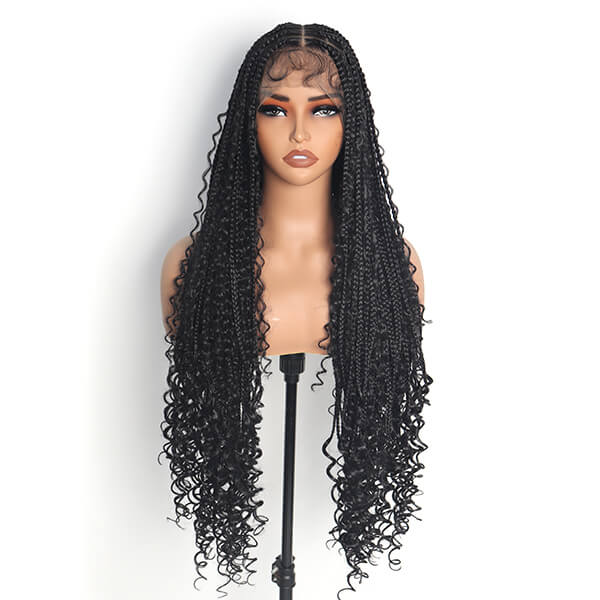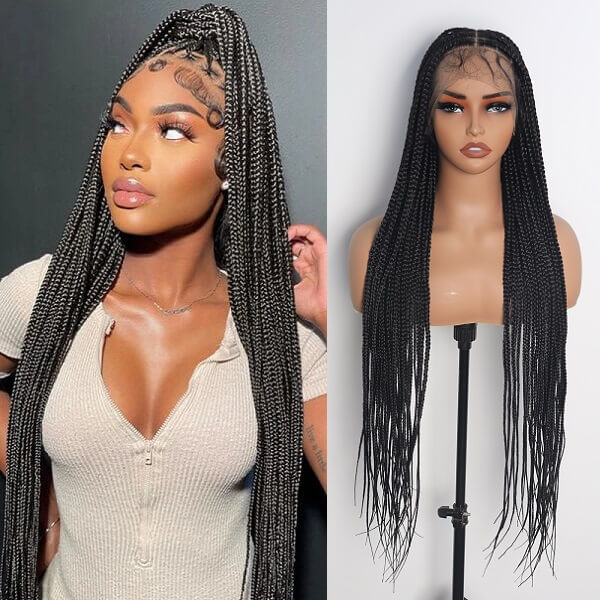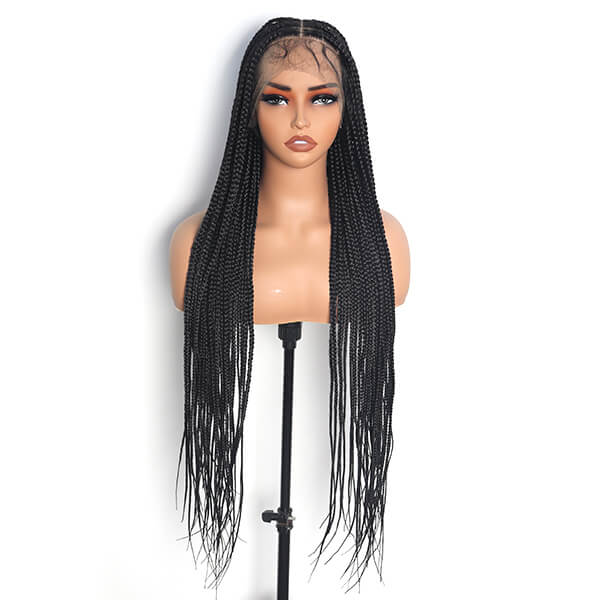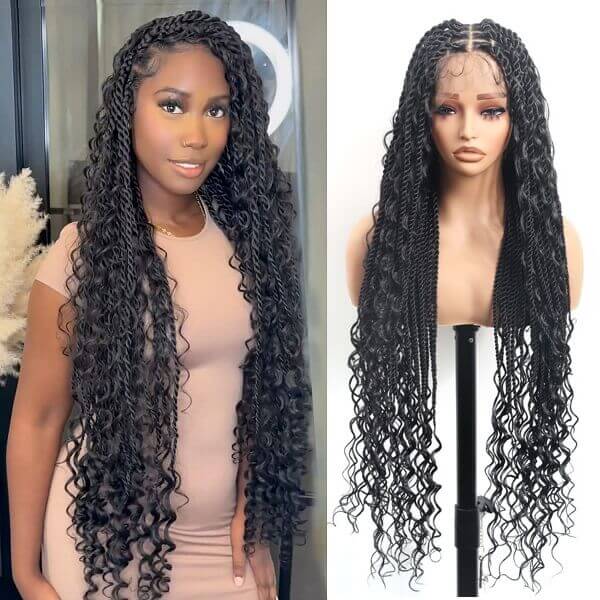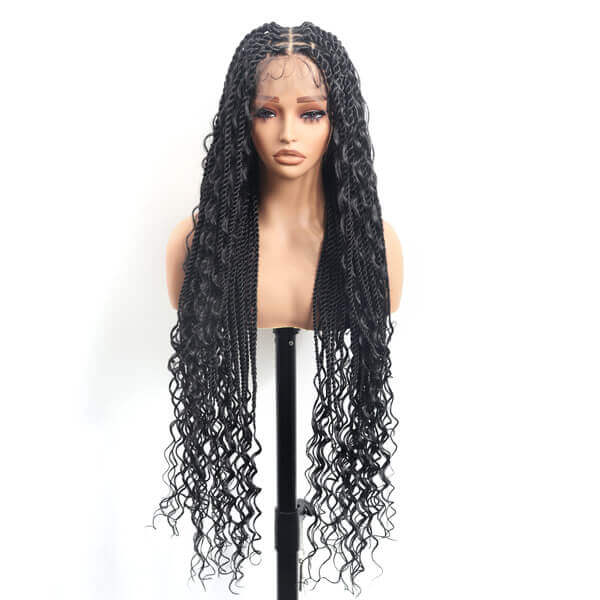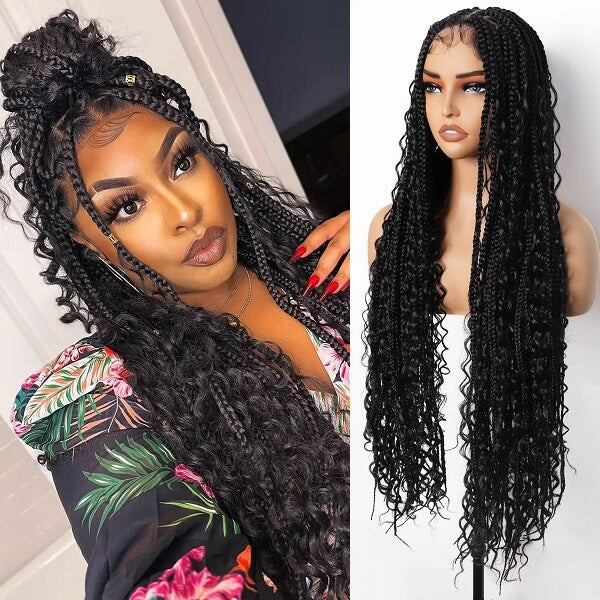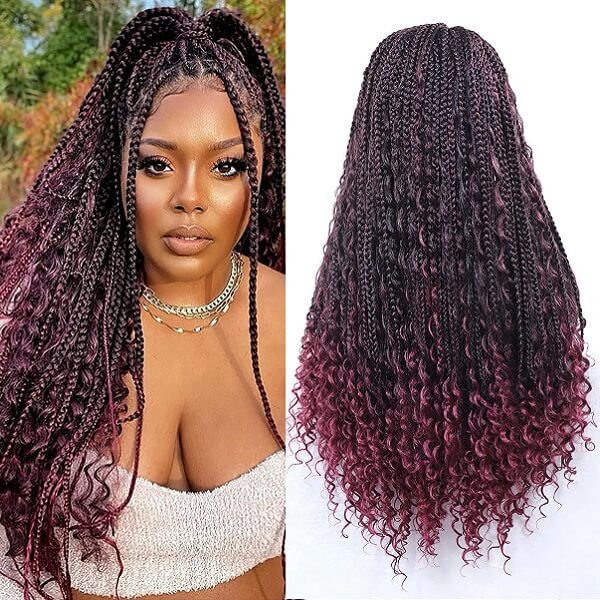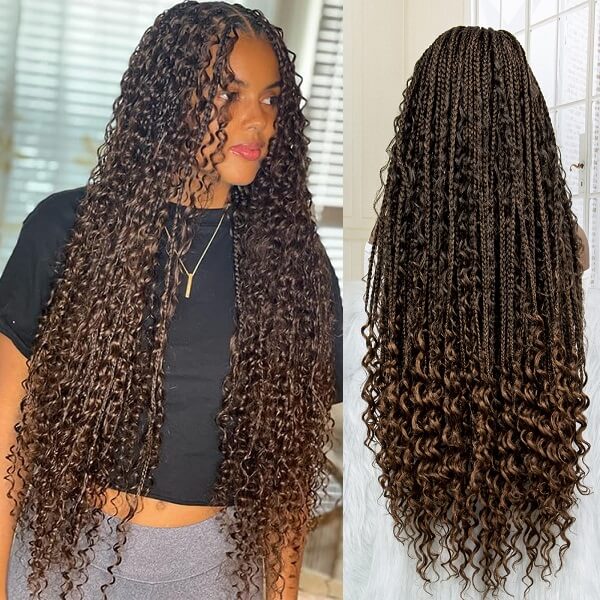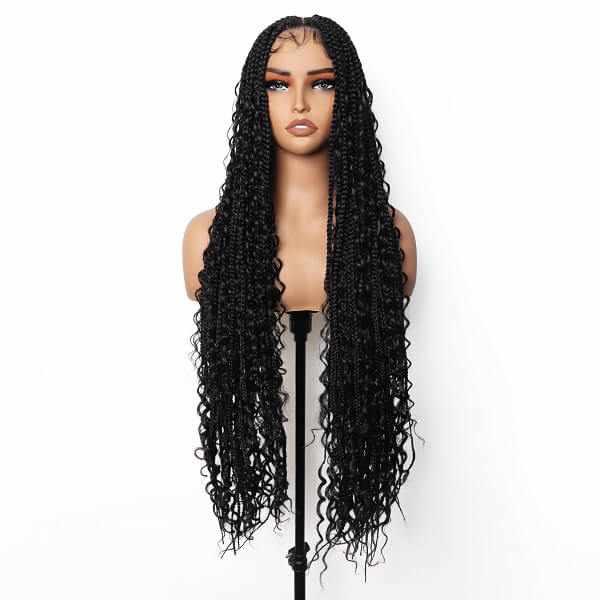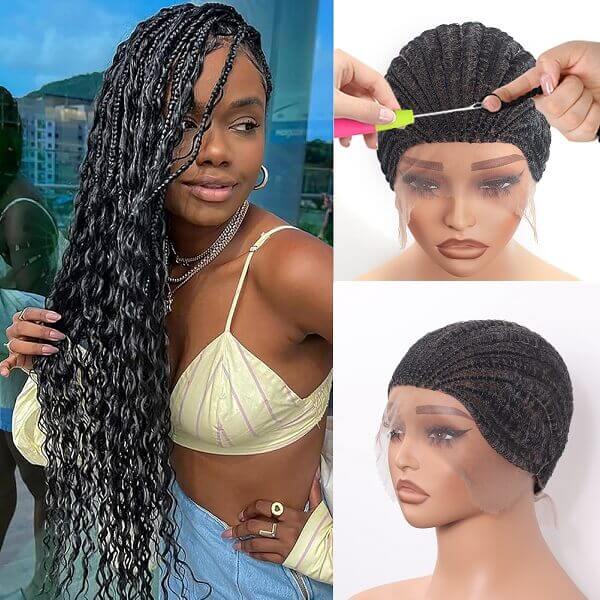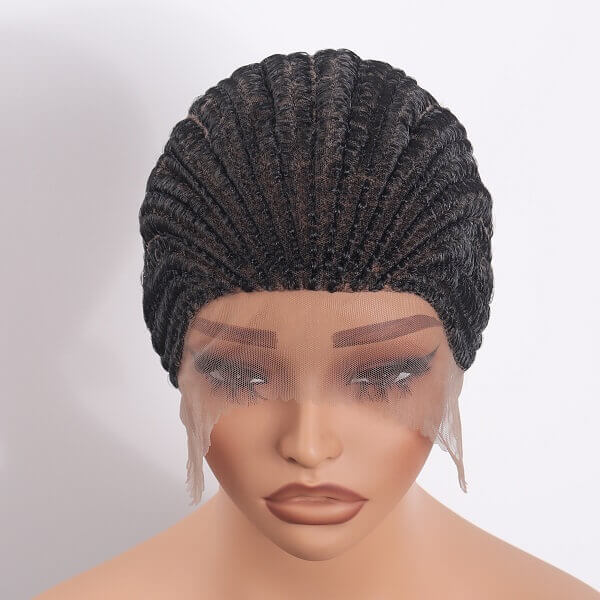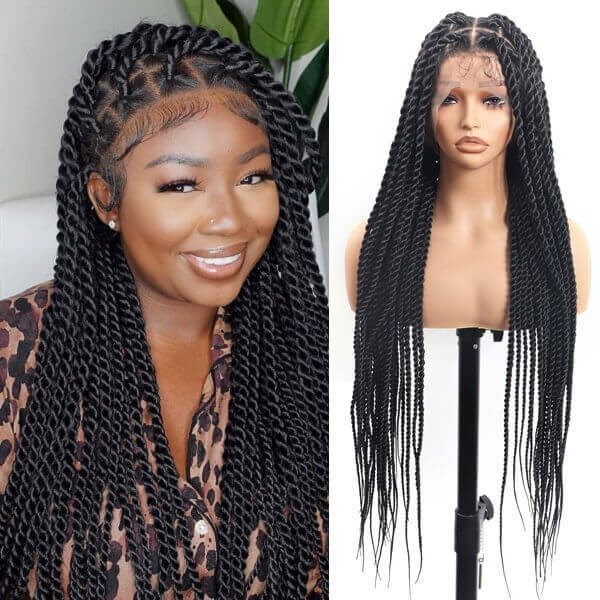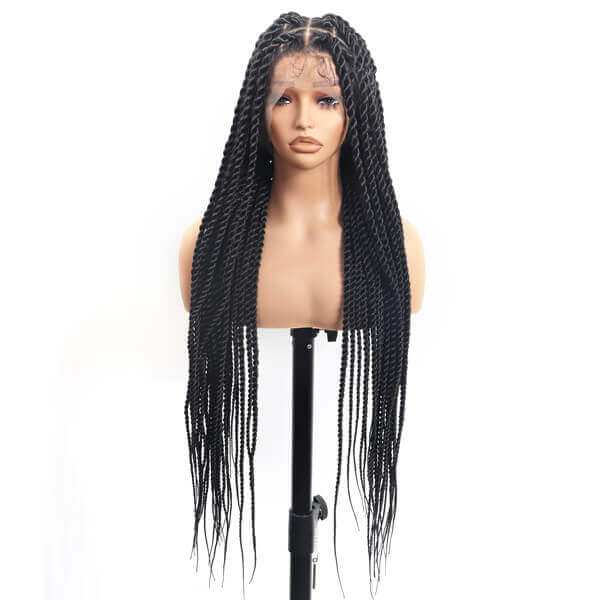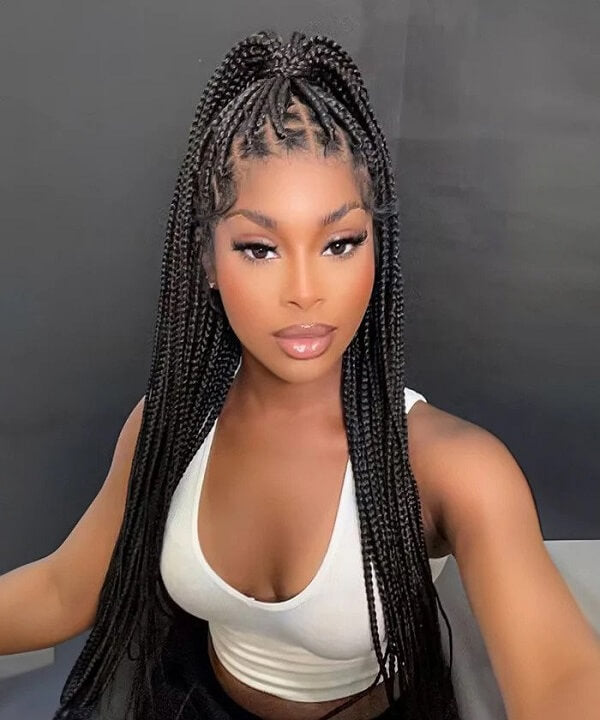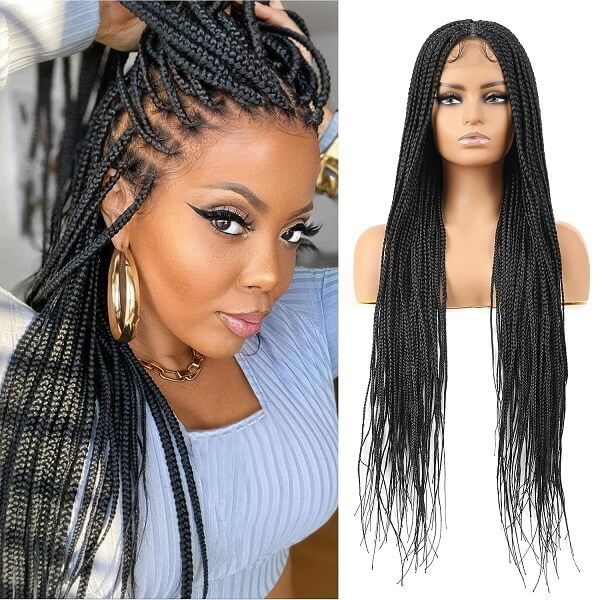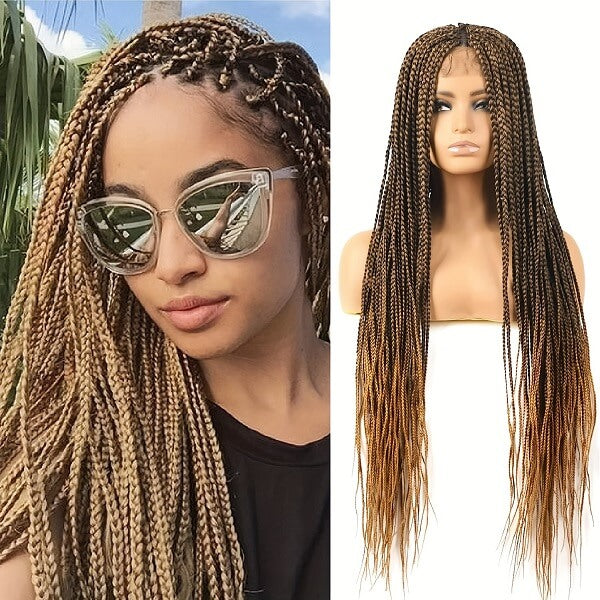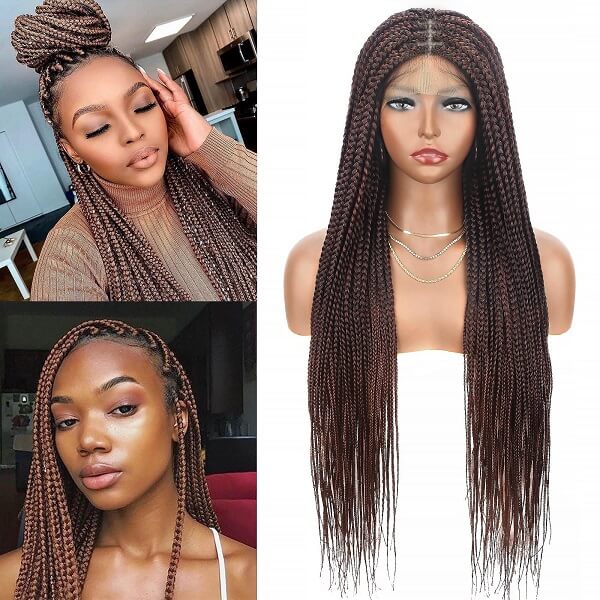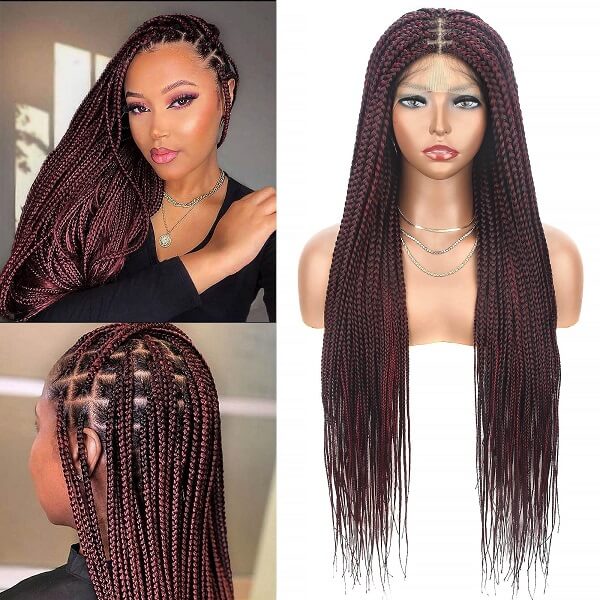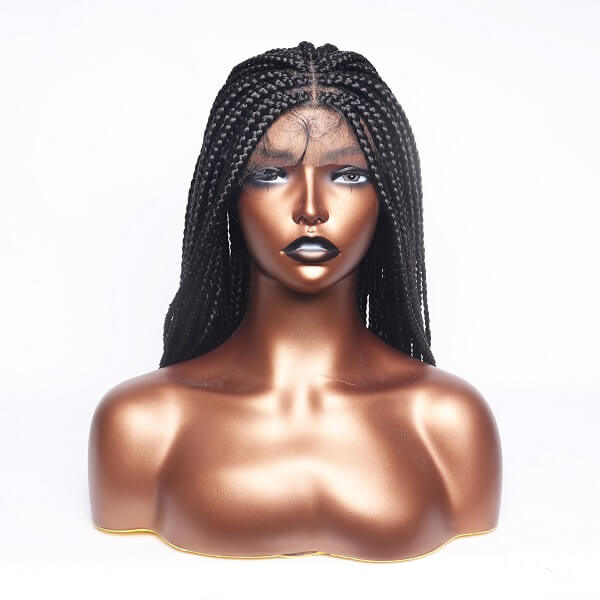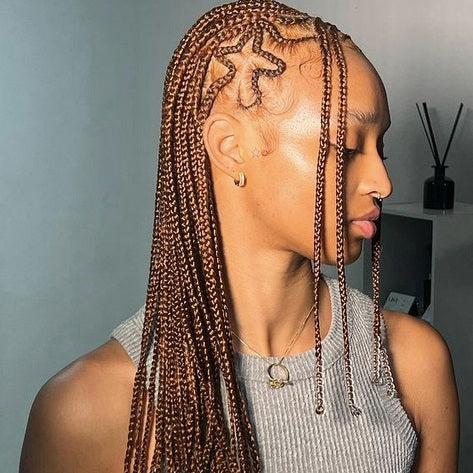Loose box braids are a common issue that can affect the neatness of your hairstyle. Over time, braids may loosen due to natural hair growth or everyday wear. While a little looseness can be natural, excessively loose braids can make your style look messy.
Keeping your braids tight is important for a polished and neat appearance. Tight braids help prevent frizz and tangling, and keep your look sharp. Knowing how to tighten loose box braids without fully rebraiding them can help you maintain a sleek and stylish look with less hassle.

Why Your Box Braids Get Loose?
Box braids can loosen over time due to several factors, which can affect their overall tightness and appearance. Understanding these common reasons can help you manage and maintain your braids better.
Common Reasons for Braids Loosening
- Natural Hair Growth: As your hair grows, the roots of your braids can begin to loosen. This is a natural process as new hair pushes against the base of the braid.
- Wear and Tear: Daily activities, such as brushing, sleeping, or even styling, can cause the braids to become looser. Friction from clothing or pillowcases can contribute to this gradual loosening.
- Product Build-Up: Using heavy hair products can weigh down the braids and affect their tightness. Over time, product build-up can lead to the braids becoming loose and less secure.
- Improper Maintenance: Failing to follow proper care routines, such as not regularly moisturizing or using the wrong products, can weaken the braids and make them more prone to loosening.

How Natural Hair Growth and Wear Affect Braid Tightness
As your hair grows, new hair emerges at the roots, which can create tension and cause the braids to loosen. Additionally, regular movement and wear on the braids can affect their tightness. Activities like sleeping or exercising can put stress on the braids, leading to gradual loosening. Understanding these factors can help you take steps to keep your box braids looking their best for longer.
Effective Methods to Tighten Loose Box Braids
If your box braids have started to loosen, there are several effective methods to restore their tightness without needing to rebraid them entirely. Here’s how you can use each technique to keep your braids looking fresh and secure.
Using a Rat Tail Comb
Step-by-Step Guide:
- Prepare Your Hair: Start with dry or slightly damp hair. Make sure your hair is clean and free from excess product build-up.
- Section the Braids: Use the rat tail comb to gently separate the sections where the braids have loosened. Be careful not to pull too hard to avoid causing breakage.
- Tighten the Roots: Insert the tail of the comb at the base of the braid and gently push it upward, working your way around the braid to tighten it.
- Smooth Out: After tightening, use your fingers or the comb’s handle to smooth out any bumps or uneven areas.
Tips for Best Results:
- Use the comb gently to avoid damaging your hair or causing breakage.
- Regularly check your braids for looseness to address it before it becomes a bigger issue.
Applying Hair Gel or Edge Control
Instructions for Applying Gel or Edge Control:
- Choose the Right Product: Select a strong-hold hair gel or edge control suitable for your hair type. Some popular options include Eco Styler Gel and Got2b Glue.
- Apply Product: Dab a small amount of gel or edge control on your fingertips. Gently apply it to the roots of the loose braids, focusing on areas that need tightening.
- Smooth and Secure: Use your fingers or a small brush to evenly distribute the product and smooth down the roots. This helps secure the braids and prevents further loosening.
- Allow to Set: Let the product dry completely before touching or styling your braids further.
Recommended Products for Optimal Hold:
- Eco Styler Gel: Offers strong hold and works well for various hair types.
- Got2b Glue: Provides a firm hold and is great for securing edges and roots.

Re-Braiding with a Needle and Thread
Detailed Procedure:
- Gather Supplies: You’ll need a needle, thread (preferably matching the braid color), and scissors.
- Loosen the Area: Gently unravel a small portion of the braid at the root where it’s loose.
- Re-Braid: Using the needle and thread, re-braid the section of hair, ensuring it’s tightly woven. Knot the end securely.
- Trim Excess Thread: Once the rebraiding is complete, trim any excess thread carefully.
Precautions to Avoid Damage:
- Be gentle when unravelling and re-braiding to avoid causing breakage.
- Ensure the thread is not too tight, as this can cause discomfort or damage to the hair.

Using a Braid Tightening Tool
Braid tightening tools, such as the Braid Helper or BraidTite, are designed specifically to help tighten and secure loose braids.
How to Use These Tools Effectively:
- Read Instructions: Follow the manufacturer’s instructions for the specific tool you are using.
- Position the Tool: Insert the tool at the base of the braid, aligning it with the loose sections.
- Adjust and Tighten: Use the tool to adjust and tighten the braid as needed. The tool may have mechanisms to pull the braid tighter or hold it in place.
- Finish and Smooth: After tightening, remove the tool and smooth out the braid with your fingers or a comb.
Using these methods will help you maintain tight and well-secured box braids, ensuring your style looks fresh and polished.

Preventing Loose Braids in the Future
o keep your box braids tight and looking neat, it’s important to follow good maintenance practices. Here are some tips to help prevent your braids from loosening over time and ensure they stay fresh and secure.
Maintenance Tips to Keep Braids Tight and Neat
-
Regular Moisturizing:
- Keep your scalp and braids hydrated by using a lightweight moisturizer or braid spray. This helps prevent dryness and maintains the elasticity of your braids.
-
Gentle Handling:
- Be gentle when handling your braids to avoid causing them to loosen. Use a wide-tooth comb to detangle your hair and avoid rough brushing.
-
Protective Styles for Sleeping:
- Protect your braids while sleeping by wearing a satin or silk scarf, bonnet, or using a satin pillowcase. This reduces friction that can lead to loosening.
-
Avoid Over-Styling:
- Limit the amount of styling or manipulation you do to your braids. Over-styling can stress the braids and cause them to loosen.
-
Regular Touch-Ups:
- Periodically check your braids and perform touch-ups as needed. This can include tightening loose areas or applying products to maintain the braids' appearance.

Recommended Hair Care Practices
- Use the Right Products: Opt for hair care products that are designed for braided hair. Look for sulfate-free shampoos and conditioners that won’t strip natural oils from your hair.
- Clean Your Scalp: Keep your scalp clean by using a gentle scalp cleanser. Avoid washing your braids too frequently, as this can cause them to loosen or frizz.
- Avoid Excessive Heat: Minimize the use of heat styling tools. Excessive heat can weaken your braids and lead to loosening. If you must use heat, keep it at a low setting.
- Protect from the Elements: Shield your braids from harsh weather conditions, such as strong winds and sun exposure, which can cause them to become dry and brittle.
- Hydrate and Nourish: Ensure your hair is well-nourished by drinking plenty of water and maintaining a healthy diet. This supports overall hair health and helps keep your braids in good condition.
By following these tips and practices, you can maintain tight and neat box braids and enjoy a longer-lasting, polished hairstyle.

When to Consider Full Rebraiding?
While tightening loose braids can extend the life of your style, there are times when a full rebraid may be necessary to restore your braids to their original condition. Here’s how to know when it’s time for a complete rebraid and the key differences between tightening and rebraiding.
Signs That Suggest It’s Time for a Full Rebraid
- Excessive Looseness: If a significant number of your braids have become loose and tightening methods don’t seem effective, it might be time for a full rebraid. This is especially true if the looseness affects the overall look of your hairstyle.
- Significant Frizz: When your braids are showing considerable frizz that can't be managed with products or touch-ups, a full rebraid may be needed. Frizz can make the braids look untidy and unkempt.
- Breakage or Damage: If you notice that your hair is breaking or damaged around the braided areas, a full rebraid can help prevent further damage and allow for a fresh start with healthier hair.
- Severe Product Build-Up: Heavy build-up from hair products can weigh down and loosen braids over time. If product build-up has become excessive and cleaning doesn’t resolve the issue, a rebraid may be necessary.
- Unmanageable Roots: When the roots of your braids are too difficult to manage or have grown out too much, a rebraid ensures that the braids are secure from root to tip.

Differences Between Tightening and Rebraiding
-
Tightening:
- Scope: Tightening focuses on adjusting and securing loose sections of the braids without altering the entire hairstyle.
- Process: Involves methods such as using a rat tail comb, applying hair gel, or using tightening tools to address specific loose areas.
- Purpose: Primarily to refresh the look and extend the life of the current braids without a complete overhaul.
-
Rebraiding:
- Scope: Rebraiding involves undoing and redoing sections of the braids or the entire braid pattern.
- Process: Includes techniques like re-braiding with a needle and thread or starting from scratch to create new braids.
- Purpose: To completely restore the appearance and structure of the braids, especially when other methods of maintenance are no longer effective.
Knowing when to choose between tightening and rebraiding can help you maintain your box braids in the best possible condition and ensure that your hairstyle remains both attractive and comfortable.

Conclusion
Keeping your box braids tight and neat is essential for maintaining a polished look and prolonging the life of your hairstyle. By using effective methods such as a rat tail comb, hair gel or edge control, re-braiding with a needle and thread, or braid tightening tools, you can address loose sections and restore the firmness of your braids. Additionally, following preventive maintenance tips, like regular moisturizing and gentle handling, can help avoid future issues.
Remember that while tightening can provide a quick fix, a full rebraid might be necessary if your braids are excessively loose or damaged. Keeping an eye on the signs that indicate when it’s time for a rebraid will help you maintain a fresh and well-groomed appearance.
For more guidance on keeping your braids looking their best and to explore a variety of braided wig options, visit mybraidedwig.com. Discover our extensive range of braided wigs and resources to enhance your styling experience.
Related Articles:
How Many Packs of Hair for Different Box Braids Style?
Box Braids vs. Cornrows: Which Style is Right for You?


